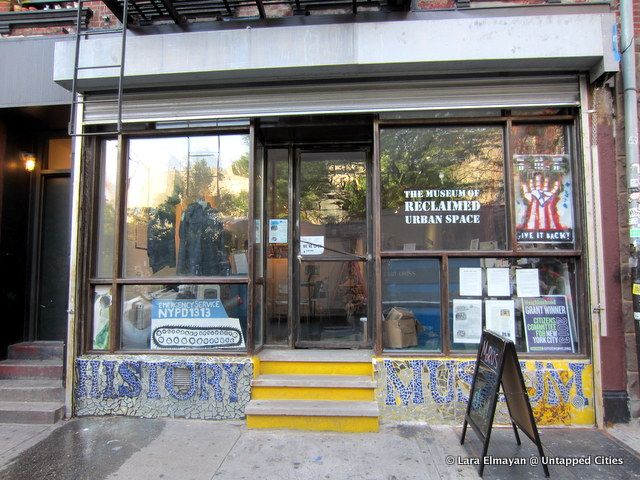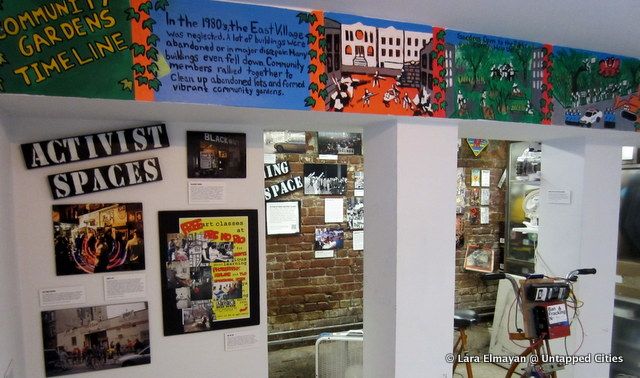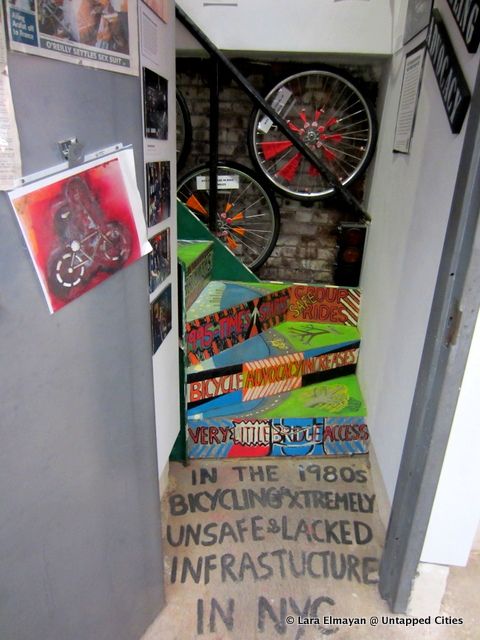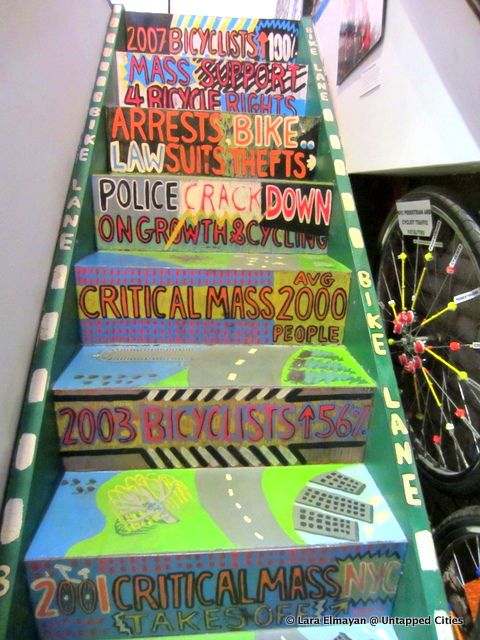Last Chance to Catch NYC's Holiday Notalgia Train
We met the voices of the NYC subway on our nostalgia ride this weekend!


Thirty minutes from Wall Street is something of an anomaly, or a miracle: a small storefront with tiles spelling “HISTORY MUSEUM” embedded unapologetically into the facade. The word “history,” to more cynical long-time East Village residents, seems accurate. The building, Avenue C’s Museum of Reclaimed Urban Space, or MoRUS, showcases the spirit of rebellion, ecological consciousness and artistic innovation that arose from the city’s neglect of the then-economically disadvantaged neighborhood. All of which, some will argue, are gone now, as signaled by the too-trendy restaurants in the area that attract steady streams of local yuppies and are too expensive for a neighborhood that was once considered unlivable by the rest of Manhattan.
But the museum is one of living history. MoRUS co-founder/co-director and Time’s Up! director Bill DiPaola, says that the museum is intended to “act as a living archive and to illustrate the continuation of activism in this neighborhood.” Exhibition descriptions may use the past tense, but the museum pushes the idea that some people haven’t given up the anarchist or pro-sustainability ideals of the past.

Books for sale in the museum cover topics from guerrilla gardening to how to handle the law. (“Seed bombs,” to throw into fenced-off abandoned lots in need of greenery, were also available for purchase.) A pamphlet we picked up told us how to recover from the frostbite we could get from biking to work in the winter to avoid burning fossil fuels; the fight for more bicycle-friendly streets, it seems, isn’t over. In fact, DiPaola is optimistic about what environmentalism has become, despite the fact that it has less of a grassroots element. “Environmental activism still thrives today, it’s just a little more mainstream due to the amount of information circulating on the issue.” he told us. “Personally, I think that people think that you need long hair, smoke weed, and drive a VW bus, but the reality is that today’s environmentalists can be mainstream and can’t be pointed out when walking down the street. They still care and work equally as hard for the rights of the environment.”
And the museum’s most interesting piece is a reminder that the days of grassroots protests aren’t gone: the bicycle-powered generator in the basement was used by Occupy Wall Street protesters to generate electricity, and then donated to the museum. During the power outages following Hurricane Sandy, museum volunteers put it out on the street as a cellphone charger.

The whole museum is still a “work in progress,” according to community liaison Sheila Jamison. When the museum was opened last December, volunteers worried about potential angry reactions to it, but not because they anticipated stockbrokers and Corcoran Group agents coming in and spewing excepts of Atlas Shrugged in protest. They were were worried about offending those who had lived all the history the museum was covering, people who might have been photographed . “We’re very passionate about everything here,” Jamison explained. But she fully acknowledges that they aren’t the only passionate ones. She and other museum volunteers didn’t want to create viewpoints that accidentally hid some truths and offended other people. So they’ve leaving room for the possibility of change.

Considering how communal the spirit of the museum is, we’d expect nothing less. The museum got approval to be housed in punk venue and squat-turned-housing co-op C-Squat (or See Squat) by the building’s residents. The museum is non-profit and run by volunteers, who are still trying to acquire some much-needed funding. So far, it’s been running on donations, grants, and money from events like its fashion show. It was staged during New York’s Fashion Week, providing an alternative to its commercialism by demonstrating how fashion has been been used historically to affect social change.
The museum also gives extremely in-depth walking tours of the East Village with focuses on radicalism, community gardens, and squats. For the sake of the neighborhood and what remains of grassroots activism in New York, we’re hoping that the museum stays to document the still-occurring history and capture the spirit of the fights, losses, and victories for saving the city.
Get in touch with the author @laraelmayan.
Subscribe to our newsletter